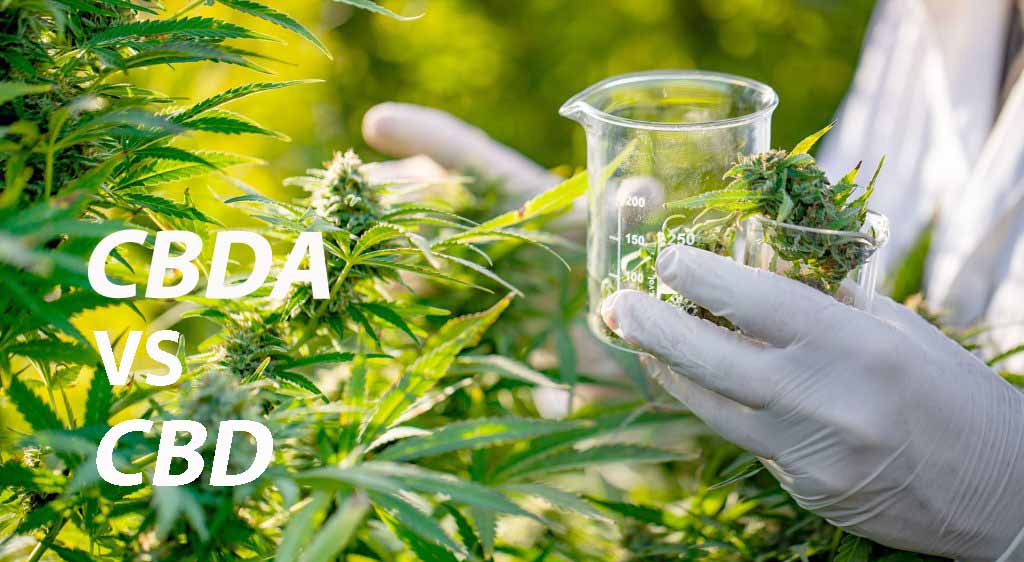What Are CBDa & CBGa and How Do They Work?
Are you interested in learning more about minor cannabinoids such as CBDa or CBGa?
While we know a lot about CBD, and it’s arguably one of the most famous cannabinoids in the world, we don’t know a lot about its precursor, CBDa. Likewise, although CBG isn’t as widely known as CBD or THC, we haven’t focused a lot of energy on its raw form CBGa.

In the following article, we’ll take a closer look at CBDa and CBGa, what they are, how they work, and why people are suddenly shifting to these two scarce compounds.
What Are Cannabinoids?
Cannabinoids such as CBD or THC are lipids or fats. There are three different ways to obtain these compounds:
- From The Plant – The most famous cannabinoids are phytocannabinoids which come naturally from plants such as THC, CBG, and CBD. There are over 100 different cannabinoids that have been identified in the cannabis plant alone.
- From Us – Any creature which has a spinal cord produces endocannabinoids or endogenous cannabinoids in the brain and body. The most well-known endocannabinoids are anandamide (AEA), 2-AG, oleamide (OEA), and palmitoylethanolamide (PEA).
- From The Laboratory – Scientists have discovered different methods to synthesize phytocannabinoids found in plants and endocannabinoids in animals and then produce them in a laboratory.
What Are CBDa and CBGa?
- CBDa – CBDa stands for Cannabidiolic Acid. It is the precursor molecule to CBD
(cannabidiol). When you heat CBDa, which usually occurs during the processing and extraction process, it turns into CBD. This process is known as decarboxylation. - CBGa – CBGa stands for Cannabigerolic Acid. It is the precursor molecule to CBG (cannabigerol). As with CBDa, when you heat CBGa, it turns into CBG.
When you purchase any CBG or CBD products, there is almost no CBGa or CBDa remaining as it has undergone decarboxylation during the manufacturing process.
CBDa is the most abundant cannabinoid found anywhere in nature. It was first isolated by scientists back in 1955 and the first cannabinoid acid to be identified. So the easiest way to think about CBDa or CBGa is as the raw form of CBD and CBG.
Interestingly, cannabis and hemp plants don’t contain a lot of CBGa because it’s naturally converted to either CBDa or THCa reasonably quickly. CBGa is the first cannabinoid produced by the plant and is the base cannabinoid for all other cannabinoids.
What Do CBDa and CBGa Do and How Do They Work?
Most research into CBDa and CBGa focuses on CBDa as it’s a more abundant cannabinoid and easier to study.
CBDa does many things, including:
- It can raise the levels of anandamide by stopping it from being removed by the body. Anandamide is commonly known as the bliss molecule.
- It can activate your serotonin receptors which are linked to things like stress, anxiety, and depression.
- It can activate your PPARα & PPARγ receptors. These receptors regulate which genes are off or on and are directly linked to your metabolism and how you process the food that you eat.
What are some of the potential CBDa benefits and effects?
One of the most significant benefits of CBDa is better gut health. However, scientists aren’t 100% sure how CBDa does what it does. We’re still in the early stages of understanding minor cannabinoids such as CBDa and CBGa and still have a long way to go before we fully understand them.
CBDa and CBGa Frequently Asked Questions
How are CBDa and CBGa different from CBD and CBG?
The easiest way to think of both CBGa and CBDa is as the precursor to the major cannabinoids CBG and CBD. This is because both CBDa and CBGa have an extra carbon atom. When they are exposed to heat, the extra carbon atom is dropped, and it becomes CBD or CBG.
Does CBDa or CBGa get you high or have any psychoactive effects?
The simple answer is no. Not in any way or form. Neither CBDa nor CBGa binds to the CB1 receptor, which is responsible for the euphoric effects you experience when you use THC.
Are CBDa and CBGa legal?
Yes! Under the 2018 US Farm Bill, any cannabinoid derived from hemp which contains less than 0.3% THC is legal. If a product contains less than 0.3% THC, then it is 100% legal.
How do you use CBDa and CBGa?
There are a variety of different ways that you can easily incorporate CBDa and CBGa into your daily health and wellness routine. Because of the versatility of cannabinoids, there are a variety of different ways that you can easily incorporate them into your daily health and wellness routine that’s both easy and also effective.
What Is CBDa & CBGa and How Does It Work? – Conclusion
Now you should have a clear idea about what CBDa and CBGa are and how they work. As with any cannabinoids, how you react and how the roles these compounds perform can be very different from person to person.
If you would like to learn more about CBDa or CBGa, please don’t hesitate to comment below or reach out to our team directly. In addition, we would be more than happy to attempt to answer any questions that you may have.

